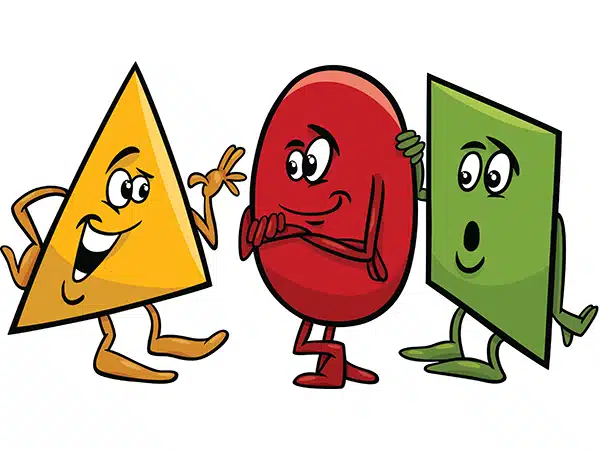You can’t choose your family members and you can’t choose your project team members. Certain people have to be on the project team because of their expertise or responsibilities. You’re stuck with each other, but can you work well together? Find out what kind of project management personality types you have on your team. Will these personalities mesh—or clash?

When project teams come together to select and implement new technology, such as an AMS or collaboration platform, you want everyone to row nicely together in the same direction. It’s possible some of you have never worked together before—and it’s possible some have, but it wasn’t necessarily a good experience. Your ability (or inability) to work well together will have a major impact on your project.
At the ASAE Technology Conference last year, we guided attendees through a personality exercise made popular by speaker and psychologist Connie Podesta. We recommend doing this exercise with your project team at the kick-off meeting. It will help people understand their own approach to project work, appreciate their differences in personalities and work styles, and give them the understanding to find common ground.
IDENTIFY YOUR PROJECT MANAGEMENT PERSONALITY TYPES
Here’s how the exercise works. Try it for yourself.
Look at these shapes: a circle, square, squiggle, and triangle.

Draw each of these shapes one time.
Now, choose one of these shapes and draw it again.
Which shape did you choose to draw twice?
Just like any personality test, no one aligns completely with one shape. You may be a strong circle with squiggle tendencies. Each shape is associated with certain work (or project) personality traits. Suspend your disbelief and come along for the ride, you might be surprised by the findings.
CIRCLE PROJECT PERSONALITY
The Circle project personality is a communicator, storyteller, and a compassionate and empathetic harmonizer. You love to have fun and laugh at work, but maybe you talk too much.
You hate conflict and confrontation. You have trouble saying “No” and setting boundaries. Sometimes you take things too personally. You tend to go silent when you’re feeling hurt or angry.
The Circle wants to “fix” everyone else. You even feel guilty and responsible for others.
You do your best work on teams. You’re the peacekeeper. “Can’t we all just get along?”
Your focus: the Who element of the project.
HOW DOES THE CIRCLE CONTRIBUTE TO PROJECT SUCCESS?
You have an eye for team dynamics and excel at building relationships and teams. Your keen sense of empathy makes you a natural change management catalyst. Not only do you show empathy, but you can also foster empathy. You’re good at getting people to see other perspectives.
WHAT DOES THE CIRCLE NEED FROM THE OTHERS?
The Circle needs their project teammates to step up and accept their fair share of responsibility and accountability. Stop asking the Circle to do things. Because the Circle wants to say “Yes” all the time, they end up taking on too much work.
HOW IS THE CIRCLE MISUNDERSTOOD?
The Circle is not always taken seriously by others, especially the more cynical members of the project team. You’re seen as the “kumbaya” personality who’s willing to “satisfice”—and who seeks the lowest common denominator to reach consensus.
SQUARE PROJECT PERSONALITY
The Square project personality is logical, sequential, analytical, detailed oriented, and organized. You love data, policies, and procedures. Structure and order make you happy. You dislike surprises.
You are dependable and responsible. Given a deadline, you’ll get it done. But you might expect the same from others. “Get it right, even if it takes all night.”
A hard worker, yes, but you’re at your best when working alone. You’re hesitant to change, and can be stubborn about the darndest things.
Your focus: the How element of the project.
HOW DOES THE SQUARE CONTRIBUTE TO PROJECT SUCCESS?
The Square is the project workhorse. You get things done. Sequencing is your forte. You keep everything on schedule and on budget. You follow policies and procedures, of course, how else would it be done?
WHAT DOES THE SQUARE NEED FROM THE OTHERS?
The Square needs help lightening up on occasion. All work and no play…
Because the Square tends to keep their head down in work, keep them in the communication loop by asking them what they want and need.
They have trouble accepting change. Change advocates will have to make a good case—backed up by data, if possible.
The Square can suffer from analysis-paralysis. They want as much data as possible before making a decision. They may get focused on the “logical” choice, so make sure they see all the options and give them a nudge if they’re taking too long.
HOW IS THE SQUARE MISUNDERSTOOD?
People think the Square can’t be creative, but that’s not true. They really can be creative, especially with a little help and patience. The Square isn’t always the most lateral of thinkers—they tend to take on issues head-on and use a straightforward approach. Colleagues may see the Square as intransigent—but the Square is just sticking to what’s proven, logical, and right.

SQUIGGLE PROJECT PERSONALITY
The Squiggle is creative, original, and counterintuitive—an energetic idea generator. You like being around fun people. And, you like attention.
You love the “big picture,” you’re always considering possibilities. But, you sometimes speak before you think and don’t always do research first before shooting from the hip.
The Squiggle gets bored easily. You’re not always organized and you don’t like being told what to do. However, you do adapt easily to change and you like to try new things.
Your focus: the Why element of the project.
HOW DOES THE SQUIGGLE CONTRIBUTE TO PROJECT SUCCESS?
The Squiggle is good at looking beyond departmental agendas to see the big picture. You want to understand the “Why”—which makes you a helpful teammate during requirements and change management discussions. In fact, you are a change catalyst. You can help others look at things differently.
WHAT DOES THE SQUIGGLE NEED FROM THE OTHERS?
Keep the Squiggle engaged and learning, otherwise they get bored. To keep them engaged and grounded, you have to keep agendas focused on the topic at hand.
Involve the Squiggle in ideation meetings and problem-solving discussions. Just know this: they’re great at coming up with new ideas and approaches, but not so great at executing.
HOW IS THE SQUIGGLE MISUNDERSTOOD?
People have the mistaken idea that the Squiggle is not serious enough. They’re a goofball or wingnut. Wrong.
Or, they think the Squiggle is full of crazy ideas that will never work—but sometimes they do!
TRIANGLE PROJECT PERSONALITY
The Triangle is confident, focused, outspoken, and used to being successful. You love being in charge and in control. You’re a self-motivated multitasker who likes setting goals—but also likes making all the decisions.
You love debating and arguing. But, you hate to lose and rarely think to apologize. You can be sarcastic and impatient at times with a “get it done” attitude.
Your focus: the Now element of the project.
HOW DOES THE TRIANGLE CONTRIBUTE TO PROJECT SUCCESS?
The Triangle is goal-oriented. They’re a quick study and a confident, quick decision-maker.
WHAT DOES THE TRIANGLE NEED FROM THE OTHERS?
You have to encourage the Triangle to listen and take in other points-of-view. Remind them that they’re not always right, and that’s normal. It takes patience to deal with the Triangle’s bull-in-the-china-shop disposition, and it takes confidence to point out their mistakes.
The Triangle has to learn how to delegate, but more importantly, they must learn how to share the lead, share the spotlight, and share the credit.
HOW IS THE TRIANGLE MISUNDERSTOOD?
The Triangle is a power player, but they may be seen as a “my way or the highway” figure. Because they’re a quick decision-maker, people may think the Triangle rushes to judgement and isn’t reflective enough—a knee-jerk decision maker, or just a plain jerk!
The Triangle is seen as a teammate who’s unable to accept opposing points of view, and unwilling to back down from a decision already made.
REFLECTING ON YOUR PROJECT TEAM’S SHAPES
The shapes exercise gives your team the chance to discuss potential contributions of each of the project management personality types. This discussion will also raise awareness of some of the typical personality issues that might arise during the project. Discussing these issues in the context of the shapes exercise may prevent having to make things personal later.
Team members can see how different project management personality types need support from each other, and how behavior might be misinterpreted. Before giving your team their marching orders, spend an hour on this exercise. A little fun up front will help the different shapes on your project team mesh together.
—

Talk to Our Experts
Looking for more information? Have questions? We’re here to help!
Drop us a line, and we’ll get in touch right away.
